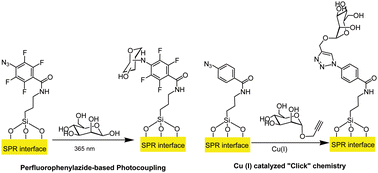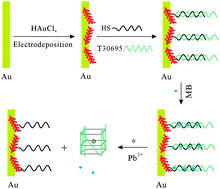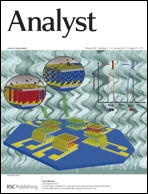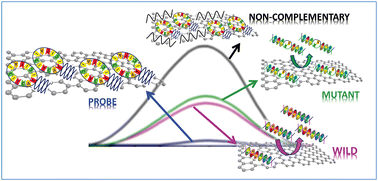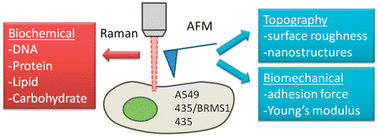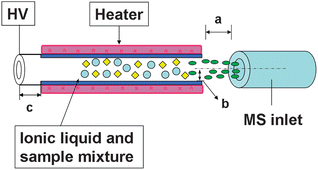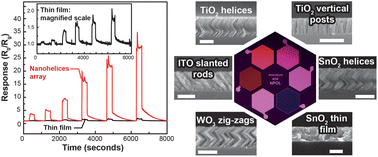The latest issue of Analyst is now online: take a look at these beautiful covers and read all about the research behind them.
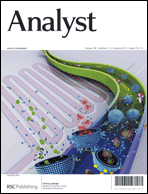
Front cover: Liu and Boyd, Analyst, 2013,138, 391-409
Our outside front cover features the work of Qingtao Liu and Ben J. Boyd from the Monash University, Parkville, Australia. In their critical review, the authors offer a detailed overview on the recent use of liposomes in the field of biosensors and bioanalysis.
Liposome surface structures can be modified in a way that they recognise a wide range of analytes. Thus, the possibility to translate liposomes into commercial devices for biosensing is discussed.
Liposomes in biosensors
Qingtao Liu and Ben J. Boyd
Analyst, 2013, 138, 391-409
DOI: 10.1039/C2AN36140J
The inside front cover gives a snapshot of a study from the Republic of Korea. Jong Kyu Kim and colleagues present a high performance gas sensor based on near single crystalline TiO2 array nanohelices fabricated by rotating oblique angle deposition (OAD). This new OAD method can be used to fabricate a functional electronic nose and multifunctional smart chips for in situ environmental monitoring.
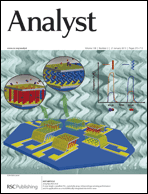
Inside front cover: Hwang et al., Analyst, 2013,138, 443-450
A near single crystalline TiO2 nanohelix array: enhanced gas sensing performance and its application as a monolithically integrated electronic nose
Sunyong Hwang, Hyunah Kwon, Sameer Chhajed, Ji Won Byon, Jeong Min Baik, Jiseong Im, Sang Ho Oh, Ho Won Jang, Seok Jin Yoon and Jong Kyu Kim
Analyst, 2013, 138, 443-450
DOI: 10.1039/C2AN35932D
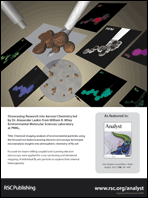
Back cover: Chen et al., Analyst 2013, 138, 451-460
Finally, the back cover of this issue shows wonderful pictures taken using a dual-beam focused ion beam/scanning electron microscope (FIB/SEM) system developed by Alexander Laskin and his group, from the Pacific Northwest Laboratories, USA. The researchers suggest a novel approach for particle microanalysis, including inorganic refractive materials like fly ash and mineral dust.
Chemical imaging analysis of environmental particles using the focused ion beam/scanning electron microscopy technique: microanalysis insights into atmospheric chemistry of fly ash
Haihan Chen, Vicki H. Grassian, Laxmikant V. Saraf and Alexander Laskin
Analyst, 2013, 138, 451-460
DOI: 10.1039/C2AN36318F
Along with the covers of this issue, here are some interesting HOT articles for you to take a look at:
A selective amperometric sensing platform for lead based on target-induced strand release
Feng Li, Limin Yang, Mingqin Chen, Peng Li and Bo Tang
Analyst, 2013, 138, 461-466
DOI: 10.1039/C2AN36227A
An insight into the hybridization mechanism of hairpin DNA physically immobilized on chemically modified graphenes
Adeline Huiling Loo, Alessandra Bonanni and Martin Pumera
Analyst, 2013, 138, 467-471
DOI: 10.1039/C2AN36199J
Thermal dissociation atmospheric chemical ionization ion trap mass spectrometry with a miniature source for selective trace detection of dimethoate in fruit juices
Yongzhong Ouyang, Xinglei Zhang, Jing Han, Xiali Guo, Zhiqiang Zhu, Huanwen Chen and Liping Luo
Analyst, 2013, 138, 472-479
DOI: 10.1039/C2AN36244A
These papers will be free until January 9th.


